There are few techniques as efficacious and expeditious as using steam to plasticize wood—especially when bending planks. The technology is simple: you need a steambox, a high-capacity steam generator, plenty of fast-action deep-throated clamps, a gaggle of small wooden clamping pads, and hopefully, some reliable helpers to assist with bending the plank to the vessel. Once planks are removed from a steambox, they immediately begin to lose their pliability, and every second counts. For two or more people working in concert, this can lead to a bit of a scramble—even with extensive preparation and experience. For a lone builder, it can be a nightmare.As luck would have it, there’s an alternative—the trusted, boil-in-the-bag technique where you bring the steambox to the boat, not the plank to the steambox.For most small craft, the critical twist in a plank is at one end, typically the bow (or in both ends if the boat is a double-ender). In the middle, the run is relatively flat and straight. Thus, when it comes to steaming, you don’t need to work on the whole length of the plank but only on the hood ends (where the plank fits into the stem or sternpost rabbets).
Join The Conversation
We welcome your comments about this article. To include a photo with your remarks, click Choose File below the Comment box.

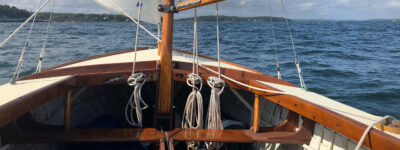
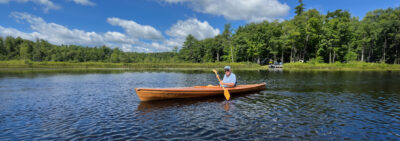
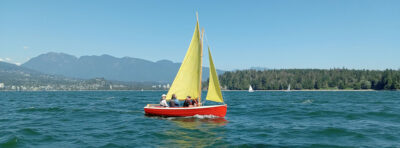

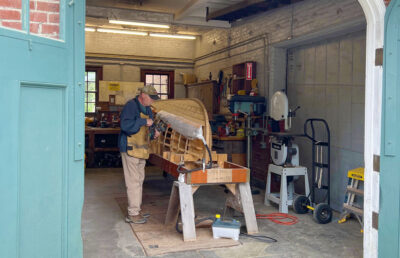
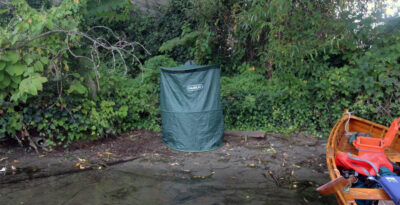


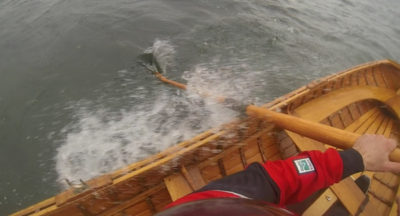
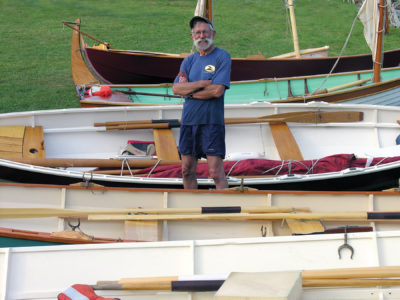
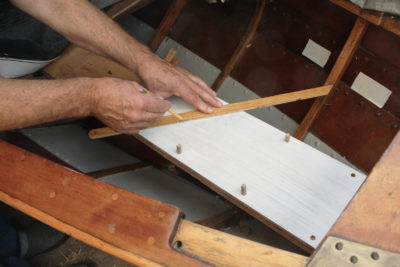
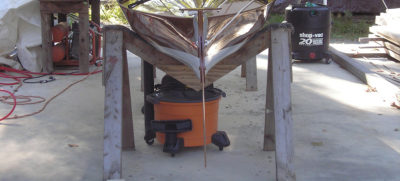
Whew,,, what a job. Now I know why I like stich and glue!
I have had some success bending with dry heat. Sometimes I use a heat gun, but for larger areas, such as a panel of plywood, I have a propane powered heater intended for paint or wallpaper removal. It has a reflector about 4.5″ or 5″ in diameter. You have to keep this kind of heat source moving to avoid scorching the wood. The dry heart method works very well when you have just a few frames to bend (bending batches is more efficient with a steam box).
One advantage of dry heat is that you don’t have to wait for the wood to dry out before gluing or finishing. I have pre-bent thin (1/8″) plywood pieces and then laminated them to make knee braces for a kayak. Once glued, the resulting lamination becomes very stiff and strong. I also backed out a strip of oak with a router before bending it to become edge banding for plywood bulkheads with S-shaped profiles.
When bending strips, I like to clamp one end in a bench vise together with a steel bending strap, then C-clamp the other end before applying heat. When the wood is hot (only takes a couple of minutes), the strap forces the inside fibers to crumple; making the outer fibers take the bend is likely to splinter the wood. The steel binding strap used to bundle lumber works well. I check out the dumpsters at the lumber yard for scrap strapping when I need a piece. It comes in various widths.
It may seem counter-intuitive, but I seldom bother to check grain orientation before bending, except that it should be straight (flat grain, vertical grain–seems to make no difference).
I have used this technique and it works great. I build Adirondack Guideboats and use it mainly for the gunnels on each end on some designs where the bend comes around and up drastically. For what I do i use plastic sterilization tubing it comes in 2″ through 6″ wide, 100 foot lengths. See link below for details:
https://www.safcodental.com/catalog/infection-control/sterilization-tubing/plasdent-sterilization-tubing?hsa_acc=3454209772&hsa_cam=18137883502&hsa_grp=&hsa_ad=&hsa_src=x&hsa_tgt=&hsa_kw=&hsa_mt=&hsa_net=adwords&hsa_ver=3&utm_source=google&utm_medium=cpc&utm_campaign=PMax_Shopping_50_GP&utm_content=NEWACCT15&utm_term=&gad_source=1&gclid=CjwKCAjw9p24BhB_EiwA8ID5Bin5457YMsuVdZ6n9VrlcfD2Wdv_WdFhXmvUA3WvhflAGvc0LYKG_hoCN0cQAvD_BwE
I have used a variation of this technique on my last three boats, which were glued-lap plywood. Max thickness of the ply was 3/8” (mm).
Lacking a steamer, I wrap the plank ends in old towelling before enclosing them in heavy (4 mil) plastic. The plastic is arranged to drain excess water just as described in the article. I have an old kitchen kettle which I fill and set to boil. Once the kettle has boiled, I lift the plastic and pour the boiling water over the towels before putting the plastic back over. I refill the kettle and repeat the process. The towelling holds the heat sufficiently between applications of each kettleful. I find that three boilings of the kettle is usually enough, and with my kettle that takes about half an hour. I pull the plank ends in with clamps while the hot towelling is still in place. Once it has cooled sufficiently, I remove the towelling and re-clamp the plank until it has dried.
One issue I encountered was heat placement: Heat rises so make sure the heat source is below the bag and parts you are steaming.